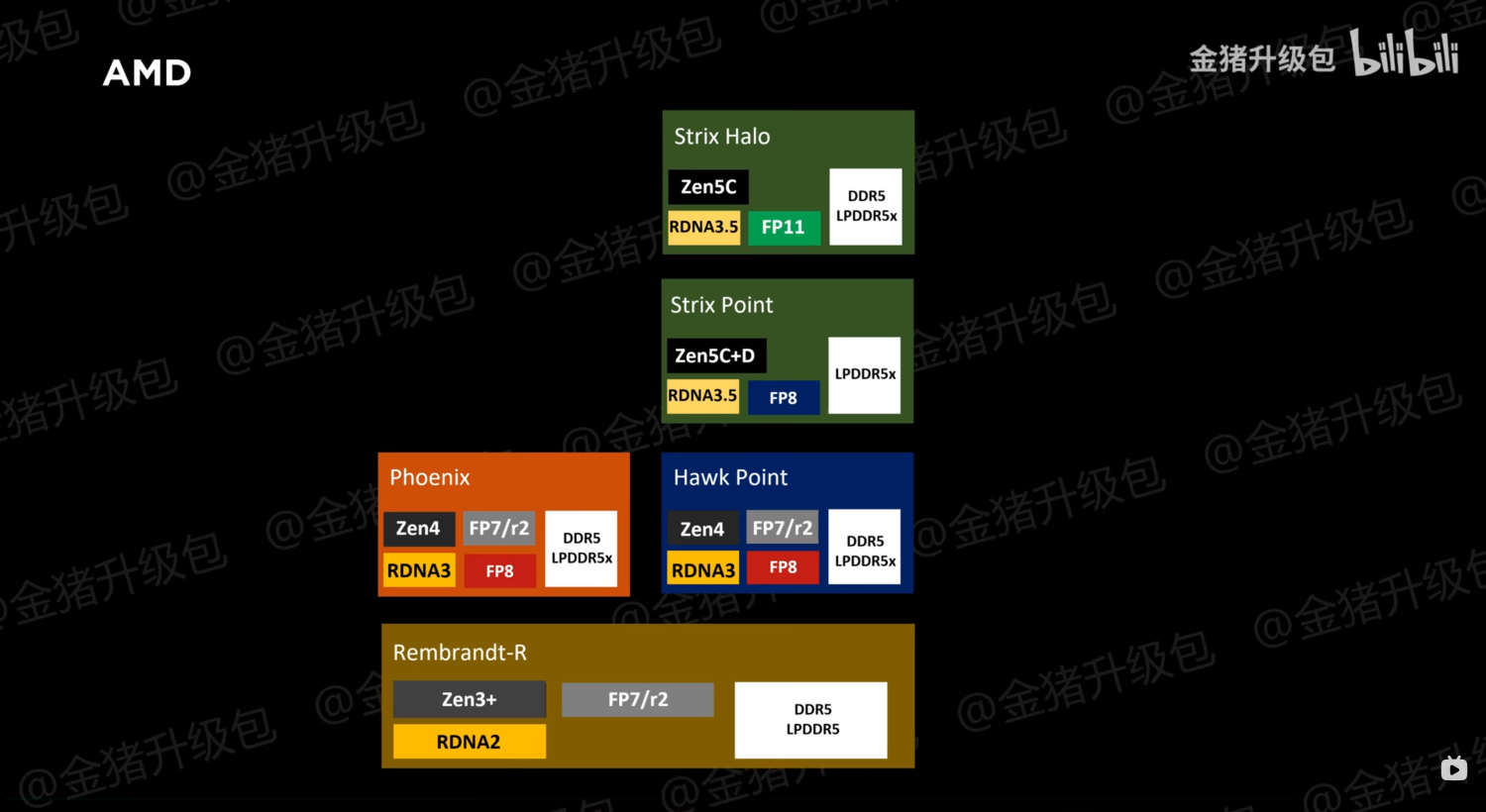AMD has revealed a roadmap for its notebook APUs, which contains some potentially very impressive chips for the best thin-and-light laptops.
The roadmap includes details about the upcoming ‘Strix Point’ processors, which will supersede the existing ‘Phoenix’ APUs that are currently available under the Ryzen 7040 name. AMD confirmed that there will actually be two different chip designs this time around, the standard Strix Point chip and a more powerful ‘Strix Point Halo’ version, both of which will debut under the Ryzen 8050 series (according to TweakTown).
We don’t know exactly what these chips will be called; right now, you can find laptops featuring the Ryzen 7640HS, 7840HS, and 7940HS, but it’s unclear whether we’ll see a similar slate of Ryzen 8050 chips (with the Halo APU as the 8950HS) or if the new lineup will feature more than 3 new processors.
In any case, there’s cause for excitement here. The standard Strix Point chip is a straightforward upgrade to the Phoenix Point APUs, but the Halo chip looks positively monstrous in terms of performance – with AMD reckoning it could go toe-to-toe with NVIDIA‘s GeForce RTX 4070 Max-Q laptop graphics card at a 90W power packet.
Integrated graphics for the win
Now, in our RTX 4070 review, we fully declared it to be one of the best graphics cards money can buy right now, so AMD promising a laptop processor with integrated graphics that can match Nvidia’s GPU (well, the laptop version of the GPU, anyway) is serious business.
The Strix Point Halo APU will reportedly accomplish this incredible level of performance thanks to a new chiplet architecture pioneered by AMD, which splits the chip’s components into separate ‘chiplets’ on the APU die. This allows for a processor with 16 Zen 5 cores, a hefty 64MB of L3 cache memory, and a whopping 40 RDNA 3+ graphics cores.
For comparison, the standard Strix Point APUs will be monolithic (meaning they won’t use the chiplet design) and will feature up to 12 Zen 5 cores, 32MB of L3 cache, and 16 graphics cores.

In other words, Strix Point Halo is threatening to be a mighty laptop APU that should be able to tangle with the best processors out there. With that many RDNA 3+ cores, a 256-bit LPDDR5X memory controller, and AMD’s new on-chip XDNA AI engine, we could see a processor that allows for thinner and lighter gaming devices than ever before – enough to put the best gaming laptops to shame.
As for when these chips will arrive, well… we don’t have a release date, sadly, but projections indicate that they’ll likely land in mid-2024, with the Halo chips coming a little after the initial Strix Point release.
I’ve long believed that integrated graphics are the future of gaming, and between AMD’s fierce competition and Apple’s upcoming M3 chip, I think that prophecy is finally beginning to ring true. With processors like the Halo APU, we could be about to see a new wave of powerful, portable gaming devices – and I can’t wait to see it.




